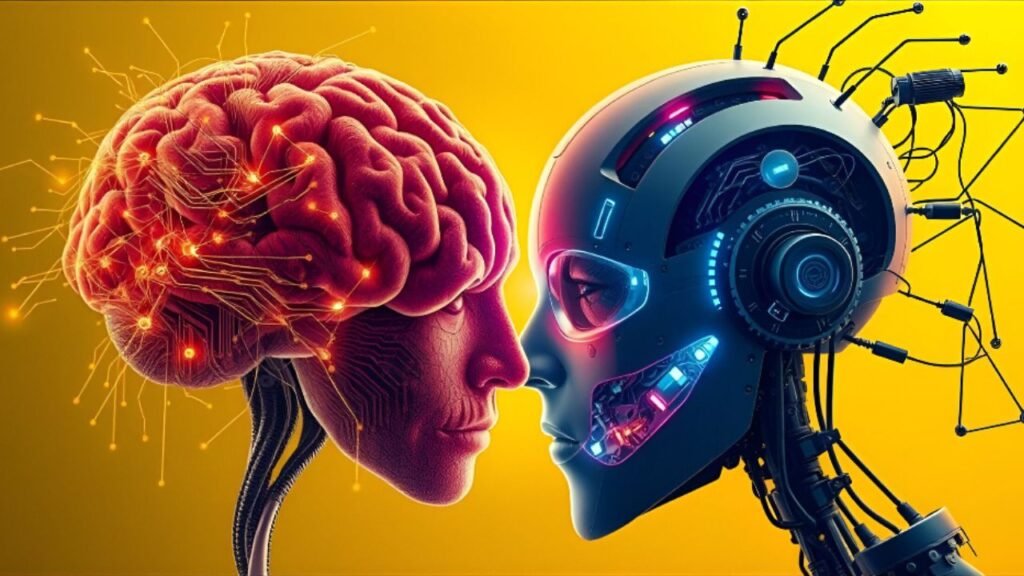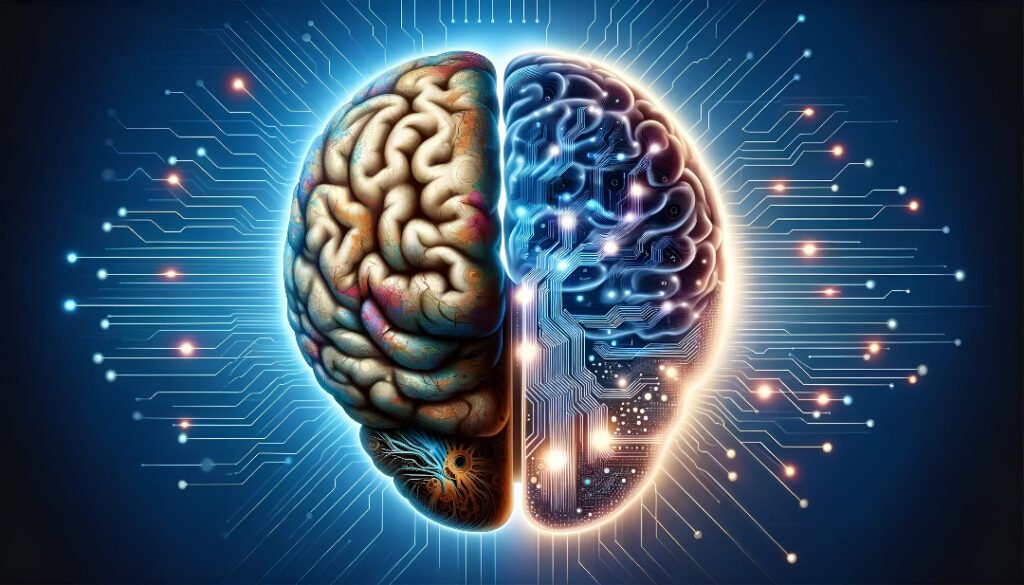
Understanding how artificial intelligence (AI) and human intelligence think—what each does well, where each struggles, and how they might complement one another—is crucial for technologists, managers, educators, and curious citizens. This article synthesizes peer-reviewed research and recent industry reporting to explain the cognitive differences, the limits of current AI, and practical implications for collaboration and policy.
How we define “intelligence” matters.
Human intelligence is a multi-faceted capacity that includes abstract reasoning, emotion, social cognition, creativity, and the ability to learn from a few examples across many contexts. AI—in today’s practice—is best described as engineered systems that perform specific cognitive tasks (pattern recognition, optimization, language generation) using algorithms and data. Scholars emphasize that conflating human general intelligence with task-specific artificial achievement leads to confusion in both debates and policy.
Learning and generalization: data-driven vs. flexible induction
AI systems (especially deep learning models) learn by fitting patterns from large datasets; they excel when data are abundant and the task is narrow. Humans, by contrast, can generalize from sparse evidence, form causal hypotheses, and transfer knowledge across very different domains. Recent critiques highlight that AI’s backward-looking, probabilistic methods often lack the forward-facing, theory-driven causal reasoning that characterizes much human problem-solving. In short: AI interpolates; humans extrapolate.
Reasoning, causality, and “understanding”
A key distinction is causal reasoning. Humans routinely ask “why?” and generate mental models that predict unseen consequences. Contemporary AI systems are improving at symbolic logic and chaining (neurosymbolic approaches), but they still struggle to build durable causal models that resemble human explanatory thinking. Hybrid systems that combine neural perception with symbolic reasoning are promising precisely because they target this gap between pattern recognition and structured understanding.
Embodiment and common sense
Human thought is tightly bound to bodily experience—a concept called embodied cognition. Our sensorimotor history (touch, motion, and interoception) shapes meaning, values, and everyday common sense. Purely disembodied AIs lack this lived context; robotics and embodied-AI research aim to narrow that gap by giving machines sensors and goals in real environments. Yet even advanced embodied agents remain far from humans’ seamless, context-rich intuitions about the physical and social world.

Social cognition, empathy, and reading the room
Humans are quick social learners: we detect subtle facial cues, tone shifts, and group dynamics. Studies find people still outperform models at interpreting multi-actor social scenes and the emotional subtext of interactions. AI can simulate empathy in scripted ways, but genuine social understanding—shaped by culture, history, and relationships—remains predominantly human territory.
Memory, attention, and cognitive offloading
AI systems can store and retrieve vast amounts of information with high fidelity; human memory is associative, reconstructive, and limited. That difference has consequences: people increasingly “offload” cognitive tasks to AI tools (calculations, drafting, recall), which can free mental bandwidth but also erode certain cognitive skills like deep recall and critical evaluation. Emerging research links heavy tool reliance to measurable changes in problem-solving and critical thinking—a trend planners and educators must account for.
Speed, scale, and pattern detection—AI’s comparative advantage
Where AI clearly outperforms humans is scale and speed: processing millions of documents, detecting subtle statistical patterns, and automating repetitive decision pipelines. This makes AI invaluable for data-intensive tasks (medical imaging triage, fraud detection, large-scale language tasks), but those capabilities do not equate to the adaptive, reflective intelligence that governs long-term strategy or moral judgment.
Convergence: hybrid models and practical collaboration
The most realistic near-term future is collaborative intelligence: systems that combine machine scale with human judgment. Neurosymbolic AI and embodied agents are concrete examples of hybrid approaches that make AI more reliable, explainable, and context-aware. For organizations, design choices should prioritize human oversight, clear roles for automated recommendations, and training to maintain human critical skills.
Practical takeaways for leaders and learners
- Use AI for scale, humans for nuance. Automate pattern-heavy tasks; reserve strategic, ethical, and interpersonal decisions for humans.
- Invest in human skills that resist automation—causal reasoning, creativity, social leadership, and meta-cognition.
- Design workflows that prevent harmful cognitive offloading: require human checks, versioning, and explicit verification when stakes are high.
Bottom line
Artificial and human intelligence are complementary rather than substitutable. AI brings unprecedented scale and pattern mastery; humans bring embodied understanding, ethical judgment, and flexible generalization. The near future belongs to systems and institutions that respect both strengths—engineering responsible hybrids while safeguarding the uniquely human forms of intelligence we depend on.











